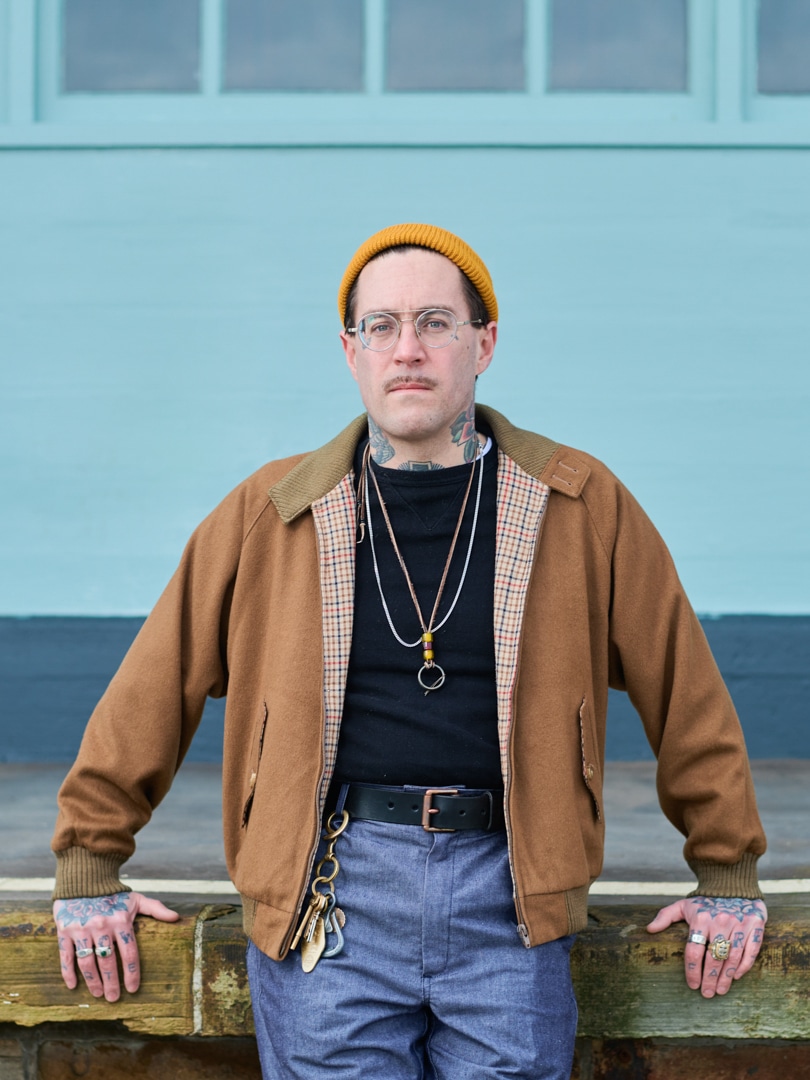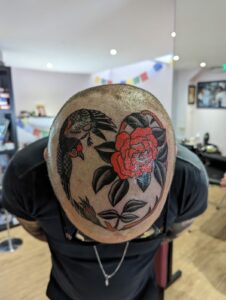


1: Tell me a little bit of what people can expect from your talk at Wimbledon BookFest.
I’m an art historian so all of my talks are naturally full of imagery and visuals. In fact some readers of the hardback edition of my book Painted People: Humanity in 21 Tattoos told me they’d love to have seen more images in there! The talk is a chance to see pictures we didn’t have space to include.
I’ll talk about designs and images from the book and some that didn’t make it. There’ll be some great stories and we’ll bust a few myths as well.
Tattooing is so often thought about as something separate from other forms of cultural production, but actually the story of tattooing is the story of everything else.
The images people tattoo on themselves, and the circumstances in which they have been tattooed can offer unique insights into people and subcultures which aren’t always represented in museums and archives.
2: When did you first get interested in tattoos as an art form?
I’ve loved them since I was little and a lot of that is down to my grandparents, though it’s not what they really intended.
My granddad was in the Dutch navy and told the story of waking up drunk in a tattoo artist’s chair in Indonesia about to get a fly tattooed on the end of his nose.
My great-grandma had her initials tattooed on her wrist by her brother who used a toyshop tattoo machine to do it and also told her it would come off.
Both stories were used a cautionary tales, which is probably why I didn’t get my first tattoo (stars on the insides of my wrists) until I was 21.
3: Do we know when the first tattoo was done and in what culture?
We don’t, but in September 1991, the 5,300 year old preserved body of Ötzi was found in ice in Austrian Alps. He had 61 tattoos on his body.
Many people think tattoos originated in the Pacific, but tattooing in Europe long predates the encounters with Pacific cultures. Tattooing, in fact, is basically everywhere, always.
4: In your book you talk about humanity in 21 tattoos – Why just 21 and what parts of our humanity do your stories cover?
I kept looking at books like Sapiens by Yuval Noah Harari or Neil MacGregor’s book The History of the World in 100 objects and I knew it wasn’t going to be a straightforward tattoo history book. I’m a tattoo collector first and a historian second, so I knew it was going to be a book about history told through tattooing.
The choice of 21 stories was fairly arbitrary but was to ensure we could cover both depth and breadth of tattooing cultures. I had 21 great stories covering lot aspects of humanity.
Stories about love, hate, sex, crime, fear, lust, pain, punishment.
And there’s a lot of surprises too, such as what tattooing can tell us about the postal service in ancient Persia, the Argentinian beef trade in the Cold War, even the care system in children’s homes in the US at the turn of the 20th century.
5: What is your favourite story in the book and what’s the reason behind that?
I love Madeline Altman’s story, she was a sassy kid from Brooklyn who ran away from home in 1906 and was later found drinking rum in the Bowery and covering in sailor tattoos. One if her tattoos was done by a famous tattoo artist called Samuel O’Reilly, who got fined for it.
She went on to marry a wealthy Texan, but later divorced him and her story then seemed to disappear from the records in the 1920s.
But I’ve now discovered that she went on to marry again, the next time to a gunslinging cowboy who taught the likes of John Wayne how to shoot a gun.
Madeline resurfaces in history because her husband was tried for shooting dead an extra on a movie set. She attended every day of his trial and they stayed together for the rest of their lives.
The last part of her story didn’t make the book but we’re hoping to make a film of it, she led such an interesting life.
6: Did you have tattoos before you wrote your book, or did it spur you to get more or a different style of tattoo? Have you ever regretted having one?
I had tattoos long before I wrote the book. I’m pretty covered – maybe about 70% of my body. I’ve never regretted a tattoo but there are some that I think are more mediocre that others, or if I were to get them done now I’d have them done differently.
By the time I speak at Wimbledon BookFest I’ll have a new tattoo on my head which is a heart shaped Japanese design.
7: You recently saw some preserved tattoos at The Royal College of Physicians – was there anything that surprised you about how the ink on skin had changed over time.
It was interesting because most tattoos only survive for a person’s lifetime + six months. What was interesting about these preserved tattoos were how good they were, looking at the style and detail I was pretty certain that we could identify the artist who did them which brings a new dimension to the collection.
8: And finally have you any advice for someone who would like to get a tattoo themselves?
Don’t overthink it. People sometimes feel the need to mull over meaning. They feel like they need to construct a narrative for the tattoos. Just pick something that you like, research your artists, and expect to pay for good ones, tattoos are not cheap. Be prepared to travel, have some food, don’t get one on an empty stomach, have a painkiller and don’t get one when you’re drunk.
Dr. Matt Lodder will be talking to journalist Jennifer Cox about his book Painted People in Merton Art Space on Sunday 14 October at 3pm.
Book your tickets here.








